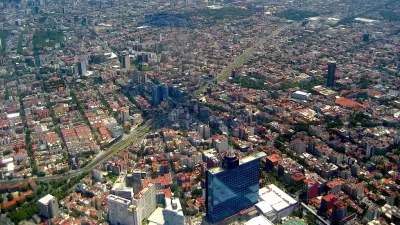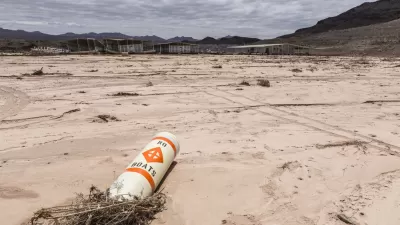As Mexico City continues to add population, issues of sprawl, inequality, and water infrastructure remain challenges in the growing megalopolis.

With its population expected to hit 24.33 million people by 2050, Mexico City residents, planners, and officials are facing increasing challenges to livability. Reporting in Inverse, Neel V. Patel writes that the three biggest challenges facing the city are inequality, poor water management and "questionable transportation."
The growing concentration of wealth in the city's center has led to gentrification which has pushed out poorer residents to Mexico City's periphery, adding to the issues of sprawl. Patel writes: "Sprawl also exacerbates problems of mobility. Mexico City residents — 78 percent of which don’t have a car — spend an average of two to three hours commuting to and from work. There's a dire need for more public transportation that is not being met." Addressing sprawl and transportation issues will remain a challenge due to lack of coordination between various local and federal agencies.
Lastly, the city's drainage system is antiquated and unable to manage heavy rainfalls, resulting in flooding and mudslides. The poor water management system has also led residents to get their supply of water from water trucks, rather than relying on local infrastructure.
Water management is an especially paradoxical problem. “The irony,” says [Diane Davis, an urban planning professor at Harvard], “is that Mexico City” — built on a lakebed — “has an excess of water, but it’s not well managed or captured. There’s a lot of rainfall that produces a lot of flooding. At the same time, the drainage infrastructure is such that it can’t separate sewage from drain water.”
FULL STORY: The Future of Mexico City: A Design Town With an Infrastructure Problem

Maui's Vacation Rental Debate Turns Ugly
Verbal attacks, misinformation campaigns and fistfights plague a high-stakes debate to convert thousands of vacation rentals into long-term housing.

Planetizen Federal Action Tracker
A weekly monitor of how Trump’s orders and actions are impacting planners and planning in America.

San Francisco Suspends Traffic Calming Amidst Record Deaths
Citing “a challenging fiscal landscape,” the city will cease the program on the heels of 42 traffic deaths, including 24 pedestrians.

Defunct Pittsburgh Power Plant to Become Residential Tower
A decommissioned steam heat plant will be redeveloped into almost 100 affordable housing units.

Trump Prompts Restructuring of Transportation Research Board in “Unprecedented Overreach”
The TRB has eliminated more than half of its committees including those focused on climate, equity, and cities.

Amtrak Rolls Out New Orleans to Alabama “Mardi Gras” Train
The new service will operate morning and evening departures between Mobile and New Orleans.
Urban Design for Planners 1: Software Tools
This six-course series explores essential urban design concepts using open source software and equips planners with the tools they need to participate fully in the urban design process.
Planning for Universal Design
Learn the tools for implementing Universal Design in planning regulations.
Heyer Gruel & Associates PA
JM Goldson LLC
Custer County Colorado
City of Camden Redevelopment Agency
City of Astoria
Transportation Research & Education Center (TREC) at Portland State University
Jefferson Parish Government
Camden Redevelopment Agency
City of Claremont




























